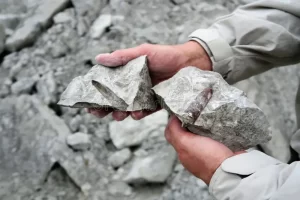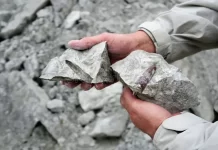
Introduction
The Earth’s crust is a dynamic system that has evolved over millions of years, giving rise to different types of rocks. These rocks—sedimentary, igneous, and metamorphic—form the foundation of Earth’s geology and hold clues to its past. Each rock type is defined by its formation process, composition, and texture, which are directly related to the environments in which they form.
Understanding the differences between these three rock types is essential for geologists, students, and anyone interested in the Earth sciences. This article delves deep into each type, explaining how they form, what distinguishes them, and their key characteristics. By the end of this guide, you’ll have a comprehensive understanding of sedimentary, igneous, and metamorphic rocks, and the role they play in shaping our planet.
Table of Contents
- What Are Sedimentary Rocks?
- How Sedimentary Rocks Form
- Types of Sedimentary Rocks
- Characteristics of Sedimentary Rocks
- Examples of Sedimentary Rocks
- What Are Igneous Rocks?
- How Igneous Rocks Form
- Types of Igneous Rocks
- Characteristics of Igneous Rocks
- Examples of Igneous Rocks
- What Are Metamorphic Rocks?
- How Metamorphic Rocks Form
- Types of Metamorphic Rocks
- Characteristics of Metamorphic Rocks
- Examples of Metamorphic Rocks
- Key Differences Between Sedimentary, Igneous, and Metamorphic Rocks
- Formation Process Comparison
- Textural Differences
- Composition and Mineralogy
- Distribution and Occurrence
- Economic and Environmental Importance
- FAQ Section
1. What Are Sedimentary Rocks?
Sedimentary rocks are formed from the accumulation and cementation of mineral and organic particles, often referred to as sediments. These particles are typically transported by water, wind, or ice, and deposited in layers over time. This process of deposition is commonly associated with environments like rivers, lakes, and oceans, but it also occurs in deserts and other terrestrial landscapes.
How Sedimentary Rocks Form
The formation of sedimentary rocks involves a multi-step process:
- Weathering: Rocks at the Earth’s surface are broken down into smaller particles through processes like mechanical weathering (physical breaking apart) and chemical weathering (dissolution of minerals).
- Erosion and Transport: Once weathered, the particles are carried away by natural forces such as water, wind, and glaciers. These particles are often transported over long distances before being deposited.
- Deposition: Sediments are deposited in layers in bodies of water or on land. As more layers accumulate over time, the weight of the upper layers compresses the lower layers, compacting the material.
- Compaction and Cementation: With time, the buried sediments are compacted due to the weight of overlying layers. Minerals in groundwater precipitate and act as a cement, binding the particles together to form solid rock.
Types of Sedimentary Rocks
Sedimentary rocks can be classified into three main types:
- Clastic Sedimentary Rocks: Formed from fragments of other rocks (clasts). Examples include sandstone, shale, and conglomerate.
- Chemical Sedimentary Rocks: Formed by precipitation of minerals from water. Examples include limestone and evaporites like rock salt.
- Organic Sedimentary Rocks: Composed of the remains of plants and animals. Examples include coal and certain forms of limestone formed from shells or coral.
Characteristics of Sedimentary Rocks
- Layering: One of the most recognizable features is the presence of distinct layers, or strata, which result from the sequential deposition of sediments.
- Fossils: Sedimentary rocks are the primary hosts of fossils, the preserved remains of ancient organisms, because the low-pressure environments where they form allow for fossilization.
- Porosity: Sedimentary rocks often have high porosity due to the spaces between the particles, making them excellent reservoirs for water, oil, and gas.
Examples of Sedimentary Rocks
- Sandstone: Composed primarily of sand-sized particles, often quartz.
- Shale: Fine-grained rock made from silt and clay, often found in ancient marine environments.
- Limestone: Formed from calcium carbonate, typically precipitated from water or from marine organisms’ remains.
2. What Are Igneous Rocks?
Igneous rocks form from the cooling and solidification of magma or lava. These rocks are the primary constituents of the Earth’s crust and represent the original form of solid rock on Earth. The word “igneous” comes from the Latin word for fire, reflecting their fiery origins deep within the Earth or at its surface through volcanic activity.
How Igneous Rocks Form
The process of igneous rock formation involves two major stages:
- Melting: The rock material deep within the Earth melts due to intense heat and pressure, forming magma. This can occur in the mantle or lower crust.
- Cooling and Solidification: Magma that reaches the Earth’s surface as lava cools and crystallizes to form extrusive igneous rocks. Magma that remains below the surface cools slowly and forms intrusive igneous rocks.
Types of Igneous Rocks
Igneous rocks are divided into two major categories:
- Intrusive (Plutonic) Igneous Rocks: Formed when magma cools slowly beneath the Earth’s surface. The slow cooling allows large crystals to form. Examples include granite and diorite.
- Extrusive (Volcanic) Igneous Rocks: Formed when magma erupts onto the surface as lava and cools rapidly. This quick cooling leads to smaller crystals. Examples include basalt, rhyolite, and andesite.
Characteristics of Igneous Rocks
- Crystal Size: One of the key distinguishing features of igneous rocks is their crystal size. Intrusive igneous rocks have large, visible crystals, while extrusive rocks have small, fine-grained textures.
- Mineral Composition: Igneous rocks are classified based on their mineral content. For example, rocks rich in silica are called felsic, while rocks with less silica and more iron and magnesium are termed mafic.
- Texture: Igneous rocks can exhibit a range of textures, from glassy (such as obsidian) to porphyritic (where larger crystals are embedded in a finer-grained matrix).
Examples of Igneous Rocks
- Granite: A coarse-grained intrusive rock, commonly used in construction.
- Basalt: A fine-grained extrusive rock that makes up much of the ocean floor.
- Obsidian: A naturally occurring volcanic glass, known for its smooth, glassy texture.
3. What Are Metamorphic Rocks?
Metamorphic rocks are formed from the transformation of existing rock types (whether igneous, sedimentary, or other metamorphic rocks) through high heat, pressure, and chemical processes. This transformation occurs without the rock melting; instead, it changes its mineral composition and texture in response to its new environmental conditions.
How Metamorphic Rocks Form
Metamorphism occurs in two primary settings:
- Regional Metamorphism: Occurs over large areas due to tectonic forces. This is typical in mountain-building regions where rocks are buried deep underground and subjected to intense pressure and heat.
- Contact Metamorphism: Occurs when rocks are heated by nearby magma or lava, leading to changes in the mineral structure of the rock.
Types of Metamorphic Rocks
Metamorphic rocks are broadly categorized into two types:
- Foliated Metamorphic Rocks: These rocks have a layered or banded appearance due to the re-alignment of minerals under pressure. Examples include schist and gneiss.
- Non-foliated Metamorphic Rocks: These rocks do not have a layered texture. Examples include marble and quartzite.
Characteristics of Metamorphic Rocks
- Foliation: The development of a banded texture due to the alignment of minerals, which is common in rocks like schist and gneiss.
- Recrystallization: The minerals within the rock may grow and change in response to heat and pressure without the rock melting.
- Hardness and Density: Metamorphic rocks are generally harder and more dense than their original forms due to the intense conditions they endure.
Examples of Metamorphic Rocks
- Marble: Formed from limestone under high pressure and temperature, marble is prized for its use in sculptures and building materials.
- Slate: A fine-grained rock that originates from shale and is commonly used in roofing and flooring.
- Schist: Known for its foliated texture, schist contains visible grains of mica and other minerals.
4. Key Differences Between Sedimentary, Igneous, and Metamorphic Rocks
While each type of rock forms under different conditions, they are interconnected through the rock cycle—the continuous process of transformation from one type of rock to another. Here’s a detailed comparison of the major differences:
1. Formation Process Comparison
- Sedimentary Rocks: Formed from the accumulation and cementation of sediments.
- Igneous Rocks: Formed from the cooling and solidification of molten rock (magma or lava).
- Metamorphic Rocks: Formed from the transformation of existing rocks under heat and pressure.
2. Textural Differences
- Sedimentary Rocks: Typically display layering and may have fossils.
- Igneous Rocks: Characterized by crystal size—large in intrusive rocks, small or glassy in extrusive rocks.
- Metamorphic Rocks: Often foliated (banded) but can also be non-foliated.
3. Composition and Mineralogy
- Sedimentary Rocks: Composed of particles like sand, silt, clay, or organic material.
- Igneous Rocks: Contain minerals like quartz, feldspar, and mica, with varying silica content.
- Metamorphic Rocks: Contain re-crystallized minerals, often with banding or foliation.
4. Distribution and Occurrence
- Sedimentary Rocks: Found in layers near the Earth’s surface, covering about 75% of the Earth’s continental surface.
- Igneous Rocks: Make up the bulk of the Earth’s crust, especially beneath the ocean floors.
- Metamorphic Rocks: Commonly found in regions of tectonic activity, like mountain ranges.
5. Economic and Environmental Importance
- Sedimentary Rocks: Serve as reservoirs for fossil fuels like oil, gas, and coal.
- Igneous Rocks: Provide valuable minerals and metals, such as granite for construction.
- Metamorphic Rocks: Used in building materials (marble, slate) and as indicators of geological processes.
5. FAQ Section
1. Can one rock type transform into another?
Yes, through the rock cycle. Sedimentary rocks can become metamorphic rocks under heat and pressure. Metamorphic rocks can melt and become igneous rocks. Igneous rocks can weather and erode to form sedimentary rocks.
2. Why are fossils found mostly in sedimentary rocks?
Sedimentary rocks form in low-temperature environments, which are conducive to the preservation of fossils. The layers of deposited sediments often trap and preserve biological material.
3. What are common uses of these rock types?
- Sedimentary rocks: Used in construction and as sources of fossil fuels.
- Igneous rocks: Commonly used in construction, jewelry (e.g., diamonds), and industrial processes.
- Metamorphic rocks: Used in sculpture, architecture, and construction due to their strength and beauty.
4. How can you tell the difference between rock types?
Look at their texture, crystal size, and mineral composition. Sedimentary rocks often have layers or fossils, igneous rocks have interlocking crystals, and metamorphic rocks show banding or foliation.
Conclusion
Sedimentary, igneous, and metamorphic rocks are integral to the structure of the Earth, each playing a unique role in its geological history. While their formation processes and characteristics differ significantly, these rocks are interconnected through the rock cycle, continuously transforming over millions of years. By understanding the distinctions between these three rock types, we gain insights into Earth’s dynamic processes and the history of our planet. Whether for academic study, industry, or pure curiosity, a solid grasp of these rock types is essential for appreciating the Earth’s geology.










